I got my first peek at Juliana’s new Joplin at the Maverick launch, in the middle of last year. It looked very similar to the Maverick, with a little less beef. When the time came to ride it in real life I was lucky enough to be chosen again. The top CC X01 RSV build was sent and I set to work getting it dialled in.
Initially, the idea was to go for a ride with Juliana Ambassador Anka Martin; to take the Joplin on a meandering overnight journey on the Paparoa Track. Unfortunately for West Coast residents, a devastating storm had ripped through and, as well as blocking people from movement momentarily, it caused a slip midway through the track that wouldn’t be cleared fully by the time we were planning to ride it.
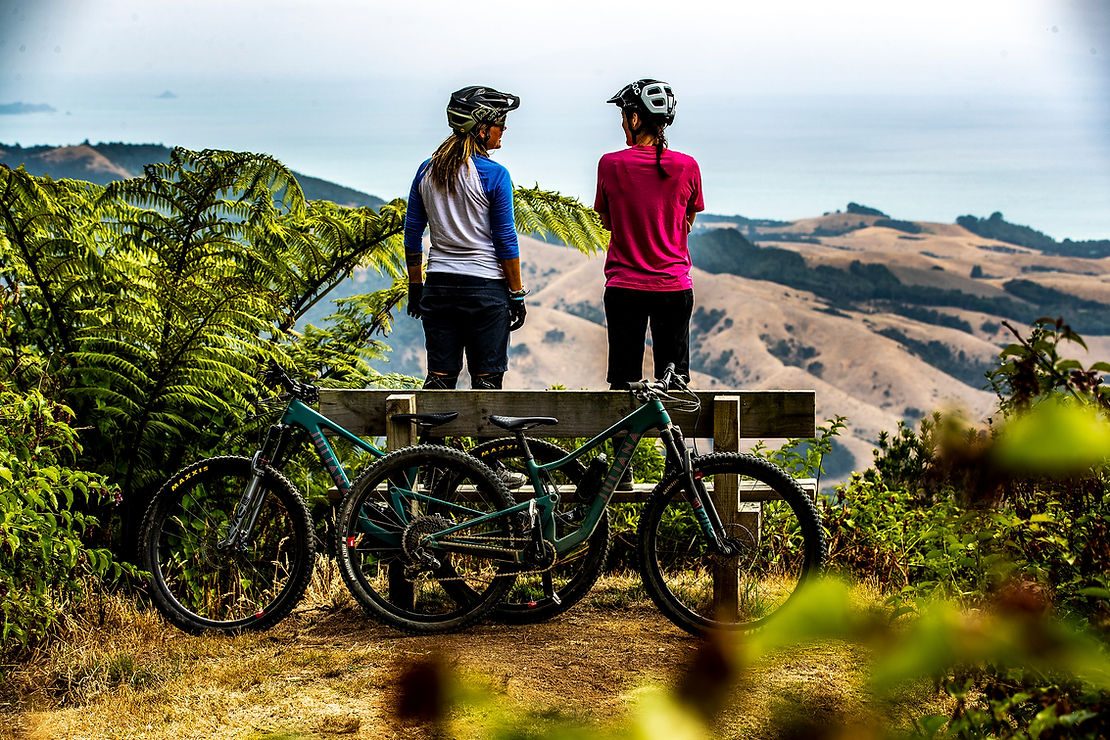
So, with the Paparoa track now on a growing list of New Zealand trails I will ‘one day ride’, we had to make other plans. Unconventional timetables aligned on the weekend following Valentine’s Day. This timing also happened to align with Jamie Nicoll’s North Island Nomadic Weekend at 440 MTB Park (and the final round of the National DH series). So, I farewelled my Valentine and headed north, through scorched pastures with cows nibbling on dehydrated blades of grass; past the many signs selling seaweed fertiliser and up to the coast, with beautiful turquoise waters and white sand beaches abruptly turning to a beautiful rocky mess.
Thoughts ran back and forth through my head as I drove, casting doubt on whether a bike park would be the ideal weekend riding away with the Joplin – a bike which has its origins in the cross-country realm of the Juliana range. Turns out, the worries were all in vain.
I had told people I was off to Auckland for the weekend, however, in small town terms, 440 is so far away from Auckland it may as well be in another town. It’s about an hours’ drive to get there from the city. Not quite far enough to escape the glow of the city at night, but more than enough to escape into the peace and quiet of nature. The stars twinkled in the sky regardless and the expected winds came, rhythmically whipping the straps of the bike rack into the boot of my car. Not rhythmically enough to send me to sleep, though, so I hauled myself out of my back seat bedroom to end the tapping.
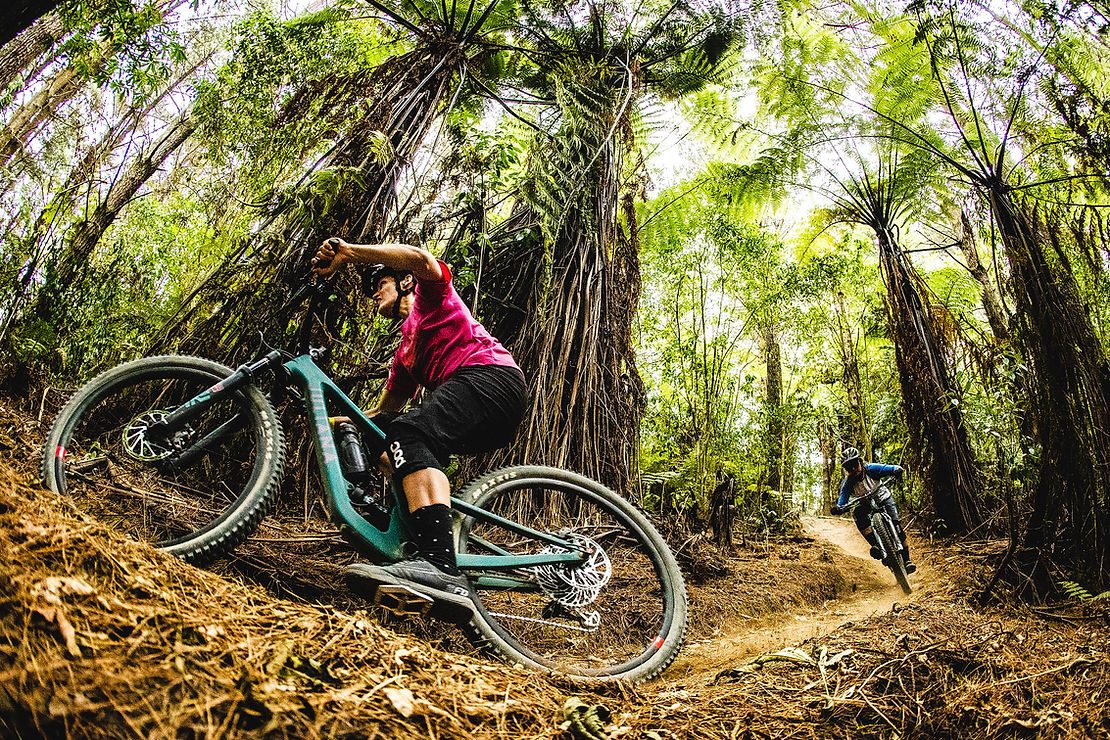
In the morning, we rolled out of the campsite to get our spots in the shuttle. From the drop off, we climbed a short while and took in the spectacular views of the Firth of Thames and islands sitting off to the east of Auckland, then headed into Doozas. This pine forest trail was fun and fast with its looseness and a few chunky roots chucked in; the kind of stuff the Joplin loves to float along.
It helped that I’d managed to ride the bike for over a month on trails I was really familiar with at home in Rotorua, which were a bit like this. This meant that I had the setup pretty much perfect for my style of riding. I did find it took longer to get there though, with much more tweaking required. I put this down to the shorter travel and needing to find the right balance of suppleness and firmness, while still getting full travel out of the suspension. It took more finesse to set up the suspension, just like it required a little more finesse on the trails heading down. It’s not a point and shoot bike and I found myself picking my lines more carefully to find patches in the trail to unweight, in order to loft over the rougher stuff.
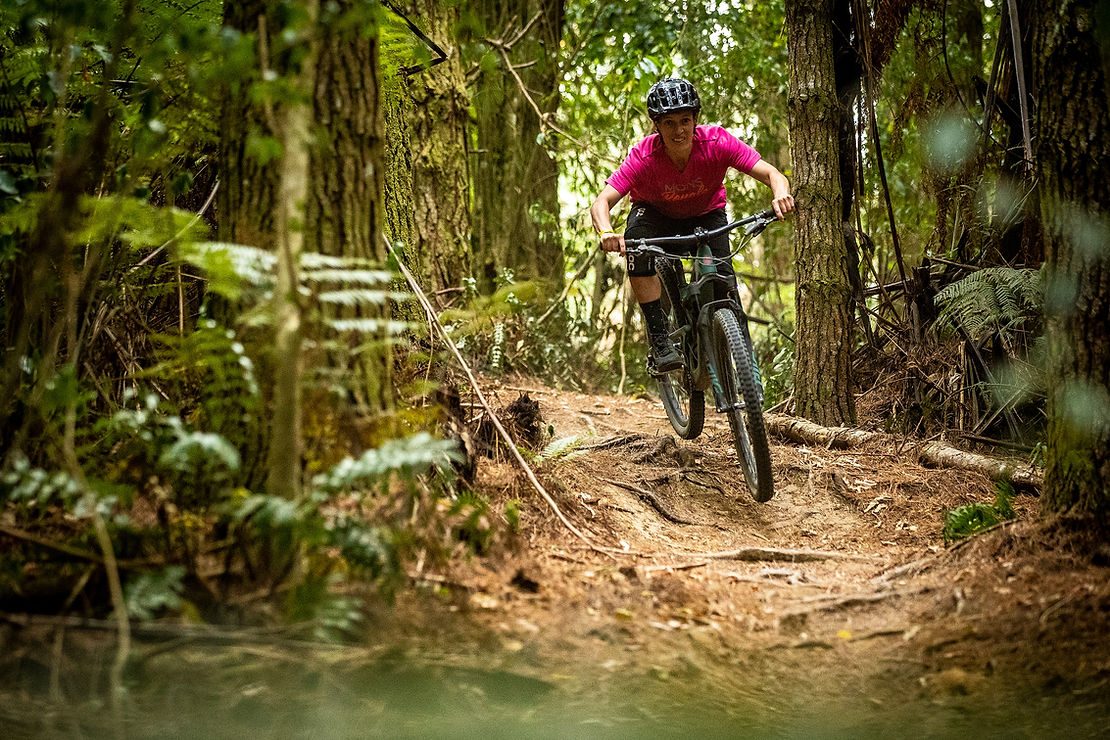
Initially, I was dubious about the capabilities of myself on such a short travelled bike. If I hadn’t already known it had 120mm rear and 130mm front suspension, I might not have ever realised – it certainly didn’t feel like your average short travel. I felt like Marie Kondo had come along and gotten rid of what I truly didn’t need, which left me riding with only the necessities of suspension. The short travel isn’t an issue when the trail gets a bit hairy, thanks to the ‘longer, lower, slacker (and steeper)’ mantra of modern day bicycle designers. This significantly updated version gets a 20mm longer reach, 2.3° slacker head angle and a 3.7° steeper seat angle, compared to the previous one from a few years ago.
Like the Santa Cruz equivalent, the Tallboy, the shock mount drops down to the seat tube tunnel of love. This lower link VPP platform felt supportive when pedalling and I couldn’t feel it bottom out, even though the O-ring indicated I definitely had. On the shock mount there’s the ability to tweak the bike with a high/low flip chip. I had already felt a bit of pedal whack with my big, old, clumsy flat pedals in the high setting, so I was a little nervous dropping the bottom bracket a touch further (3mm) towards rocks and stumps. I gave it a go anyway. Is it ok to say I didn’t really feel much of a difference between the two settings? Yes, I think it is. The angles don’t change heaps, moving from a 65.7° head tube to a 65.5°, and the seat tube gets about 0.3° slacker too.
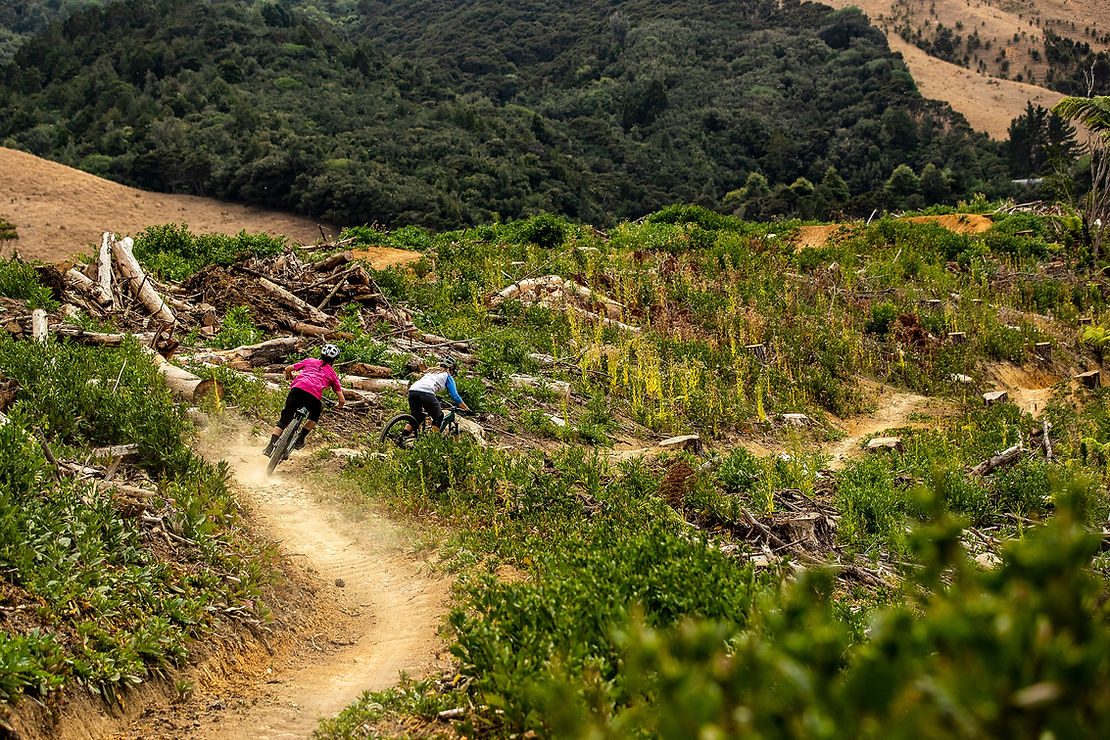
Another adjustment that can be made to the frame is out the back, at the chainstay. A second flip chip lengthens the 430mm stay out to 440m. Again, I had a preconceived thought that I would prefer the shorter, more ‘playful’ option, but I found the extra length added a little more stability for not much sacrifice in liveliness. I could still get off the ground when I wanted to. And I wanted to – a lot – with this bike. It’s light, and just mauling through chatter doesn’t work the same on the Joplin compared with a bigger travel bike. On longer rides, where I was too fatigued to work the trail over rougher terrain, I felt myself becoming a bit of a passenger. But as Janis would say; “You got to triiieeeiieeieeiy (just a little bit harder)”. It was only on these longer, more technical rides, with some really rough stuff in the way, where I found myself thinking that a few more millimetres would be handy. Riding the bike, 98% of the time it was 100% within its limits. The 2% where it was not was, coincidently, was where I was also reaching mine.
We then headed up again to one of the patches of native flora. Kauri, nikau and ponga trees enclose the Damn Native trail. Clay soil has been sculpted into berms, winding you down into the creek and out the fire road on the other side of the valley, necessitating some climbing. Even on these mellower roads, the blue lever on the FOX Float Performance Elite DPS shock stayed in the full open position. There was some movement in the shock, but it was firm enough not to lose pedalling efficiency.
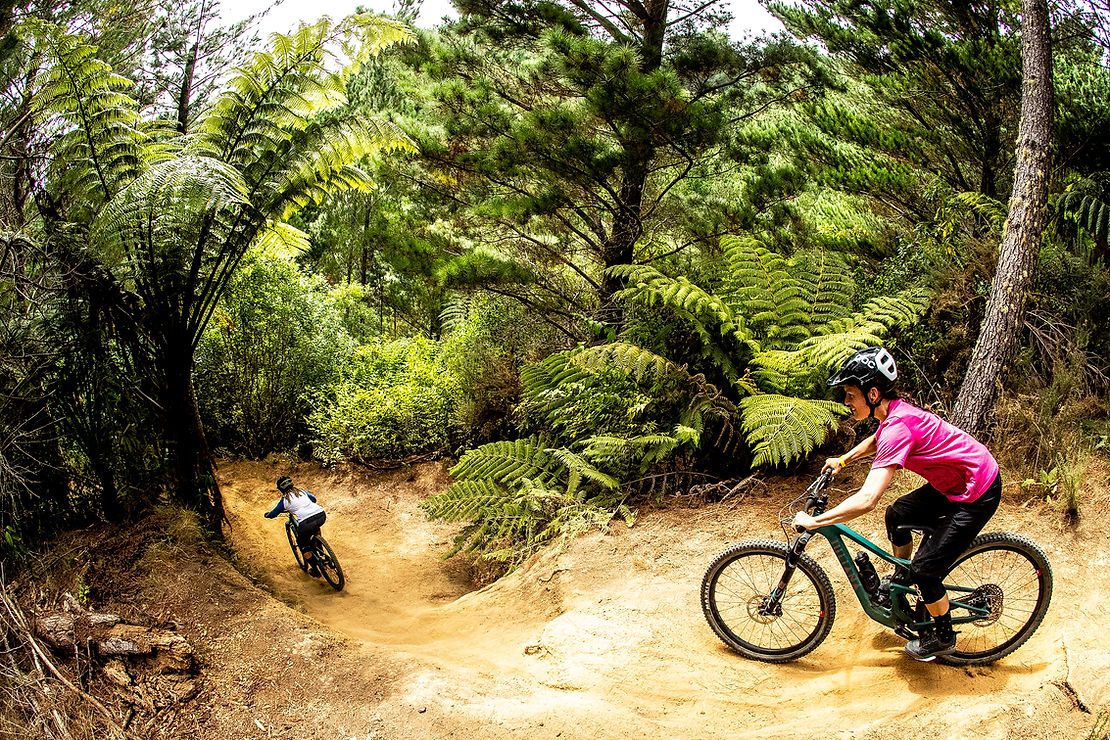
On steeper, more technical pinches back home in Whakarewarewa – like the ones lurking out in the native bush of Tuhoto Ariki – it felt easy to manoeuvre over steep obstacles with a bit of momentum. The climbing abilities came through in faster speeds up hill. On flowing single track I felt like an ewok who had stolen a speeder bike, zooming through the trees. It helps being almost a kilo lighter than the other 29er in the Juliana lineout, the Maverick, too.
More shuttles were met with more nice flowy, techy and dusty routes down. A post ride cool down and wash is a short walk across the road, in a swimming hole in the creek that flows down to the sea. Saturday evening came, and we were treated to a home cooked curry, rice and naan – this was paired nicely with generously donated Parrot Dog beers. Hungry trail dogs waited impatiently to lick any last remaining scraps from bowls and a couple of turkeys ran up the track across from the campsite. At dusk, we all sat around a dusty projector listening to tales of the past and future, inspired by crazy schemes. Jamie spoke of travels to communities, not just to tear through them, but to engage with the people who live in them. What he’s got planned is equally impressive: he’s modifying an old Toyota Land Cruiser, fit to transport him and his bike over land and sea to Europe. Writing that sentence makes it seem so easy, but looking on the map with him puts into perspective what an immense feat it will be.
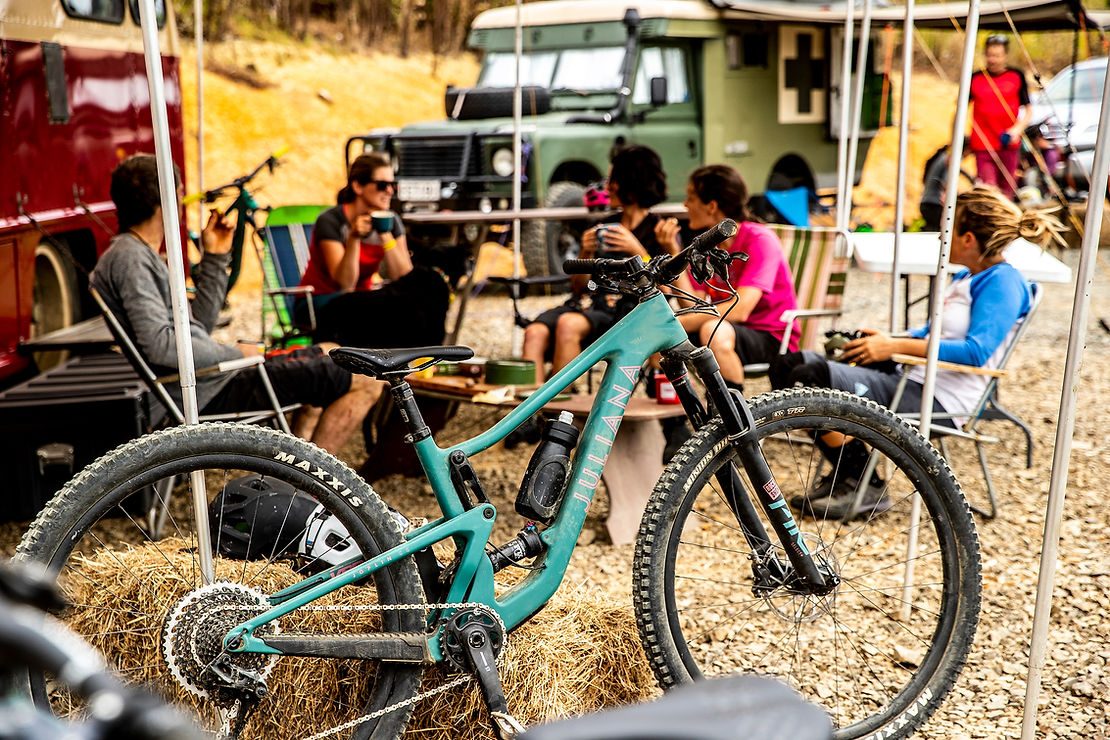
Next up was Anka, to show us what she did in her 2019. It’s crazy to think that everything she showed us happened in one year! The part that stood out for me was her time in Roma, Lesotho. Anka, along with Claudio Caluori from Velosolutions – who had previously built a world-class pump track there – ran the Red Bull pump track qualifier. Along with the win came the opportunity to compete in the World Championship in Switzerland. Anka helped the local riders – one of them winning by marginally beating a guy from South Africa who had travelled there in hope of an easy entry. These acts enrich communities, bringing them together. And there are plenty of places to go to right in front of us, living here in Aotearoa. This was especially apparent when we watched the slide show of amazing locations, many of which looked like they could have belonged in New Zealand. It was really good to get to know Anka a bit more than knowing of her through watching her rad videos. While listening to Anka and Jamie I didn’t feel too much like a nomad, but I enjoyed listening to nomadic tales from people who live their lives as travellers of the world.
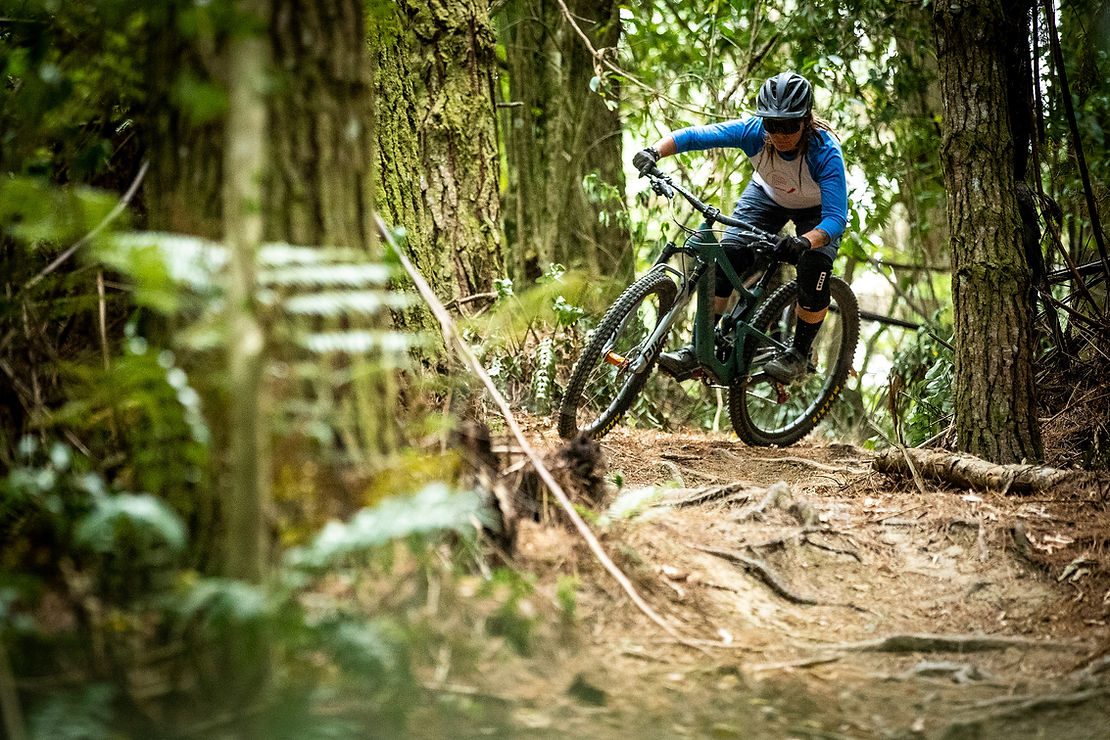
On Sunday morning, Friday’s smell of freshly laid asphalt had disappeared and the newly sealed pump track was ready to use. The Nomadic Weekend culminated in ‘musical pump track’, a game very loosely based on musical chairs. Underneath the gumtree filled with a variety of birds, and a drone hovering nearby, and a confused dog barking, everyone piled onto the track to ride around until the music stopped. The winner was whoever ended up closest to the speaker. I was far from the first winner and came away with a sweet Ground Effect jacket; the greatest prize, however, was a set of Santa Cruz Reserve wheels. Lucky Chris!
It was great getting to know the Joplin, and to make new connections with some of the people who make this brand what it is. It’s a bike that can be as versatile as the rider. The riders I’ve talked to who love their Joplins and Tallboys and ride them hard – and exclusively – have up-forked them themselves, to 140mm in the front. For the Pike Select+ this requires a new air spring getting fitted, which seems an easy upgrade if that’s the style of riding the bike is being used for. To further beef the bike up, the stock Maxxis Minion DHF/R 2.3’s could get fattened. The frame also allows 2.6’s when the rear axle flip chip is in the longer position. I liked the feel of the 2.3s on the trails I rode, but it’s nice knowing you have other options. On the other hand, it’s also a bike longing for a backcountry adventure – heck, it’s even got two bottle mounts! As for the middle ground, those every day riding missions, it’s a heap of fun.
Words: Rachel Reynolds
Images: Sven Martin

